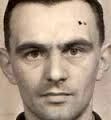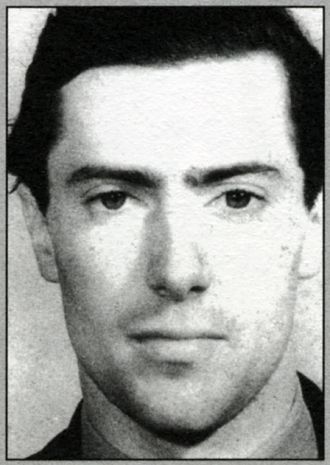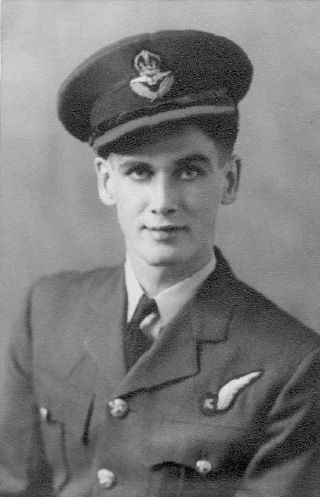Advertisement
Advertisement
Susan Paxton
About me:
I haven't shared any details about myself.
About my family:
I haven't shared details about my family.
Updated: January 19, 2014
Message Susan Paxton
Loading...one moment please


Recent Activity

Susan Paxton
commented
Apr 13, 2014 5:35 PM

Susan Paxton
updated a bio
Mar 18, 2014 4:35 PM
Photos Added
Recent Comments

Susan Paxton
commented
Jan 24, 2014 1:39 PM

Susan Paxton
commented
Apr 13, 2014 5:35 PM

Susan Paxton
commented
Apr 13, 2014 5:06 PM
Susan's Followers
Be the first to follow Susan Paxton and you'll be updated when they share memories. Click the to follow Susan.
Favorites
Loading...one moment please


AncientFaces
This account is shared by Community Support (Kathy Pinna & Daniel Pinna & Lizzie Kunde) so we can quickly answer any questions you might have.
Please reach out and message us here if you have any questions, feedback, requests to merge biographies, or just want to say hi!
2020 marks 20 years since the inception of AncientFaces. We are the same team who began this community so long ago. Over the years it feels, at least to us, that our family has expanded to include so many. Thank you!
2020 marks 20 years since the inception of AncientFaces. We are the same team who began this community so long ago. Over the years it feels, at least to us, that our family has expanded to include so many. Thank you!

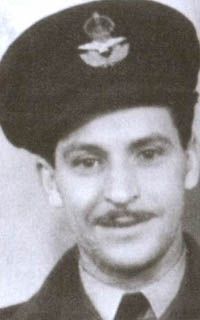
Robert Norman George Barlow of Carlton North Australia was born in 1911 in Carlton North, and died at age 31 years old on May 16, 1943 in Germany. Robert Barlow was buried at Britischer Ehrenfriedhof Grunewaldstraße, in Kleve, NRW.
Edward Gordon Williams was born in 1907 in QLD Australia, and died on September 2, 1907 in Kings County, New York United States. Family, friend, or fan, this family history biography is for you to remember Edward Gordon Williams.
Sheila (Williams) Fry of Lyneham, ACT Australia was born on July 22, 1916 in Townsville, QLD to Horace Edward Williams. She had siblings Charles Rowland Williams, Horace Douglas Williams, Francis Ainslie Williams, and Edward Gordon Williams. Sheila Fry married Eric Charles Fry, and died at age 90 years old on May 4, 2007.
Francis Ainslie Williams was born in 1910 to Horace Edward Williams, and had siblings Charles Rowland Williams, Horace Douglas Williams, Sheila Williams, and Edward Gordon Williams. Francis Williams died at age 3 years old on December 20, 1914 in Aramac, QLD Australia, and was buried in Aramac. Family, friend, or fan, this family history biography is for you to remember Francis Ainslie Williams.
Horace Douglas Williams was born on March 19, 1906 to Horace Edward Williams, and had siblings Charles Rowland Williams, Francis Ainslie Williams, Sheila Williams, and Edward Gordon Williams. Horace Williams died at age 70 years old on May 13, 1976 in South Brisbane, QLD Australia. Family, friend, or fan, this family history biography is for you to remember Horace Douglas Williams.

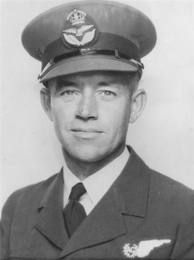
Charles Rowland Williams was born March 19, 1909 in Townsville, Queensland, Australia. His father Horace Edward Williams, an emigrant from England, managed a sheep station; his mother Helena was a governess and the daughter of a German Lutheran minister. Charlie was one of 5 children: his older brother Horace Douglas (Doug) (1906-1976), Edward Gordon, who died at or shortly after birth in 1907, Charlie, brother Francis Ainslie (Frank) who died age 4 from diphtheria (1910 to 1914), and sister Sheila (1916-2007). Early education came from their mother and from traveling teachers; later Charlie and Doug attended boarding school in Townsville. His formal education ended at 16 but he was intelligent, well read, mechanically adept, and a hard worker. Charlie was a good mixer with excellent manners and a straight faced, self-deprecating sense of humor. He enjoyed tennis and cricket and was a fine horseman. During his service in the RAAF, he took up squash and golf as well. A slender man of average height, Charlie had fair hair and grey or grey green eyes.
In 1933, in the depths of the depression, the Williams’ sheep station was sold out from under them. The family struggled to start over, having to take over another station on very disadvantageous terms, but by the time war threatened, their business was doing better in spite of Horace’s ill-health, as the two brothers stepped up to take over. At the time of Australia’s entry into WWII, they felt they should serve, but agreed that Doug should join the Home Army, and that Charlie, who was eager to see something of the world but had never been further afield than Brisbane, should try for the Royal Australian Air Force.
While waiting for the RAAF, he served with Doug in the local Home Army unit, where he learned the use and maintenance of machine guns. In August 1940 he was summoned for his RAAF medical and interview, at which time he became a member of the Reserve; in January 1941 he was called up for training. Like most young men, Charlie wanted to be a pilot, but at 31 it was felt he was too old and he trained as a Wireless Operator/Air Gunner, earning a rare commission as an officer.
While training Charlie became engaged to a young nurse named Millie McGuiness. The relationship was not destined to survive separation as after Charlie shipped out to the UK, Millie stopped writing for several months; by the time she started again, Charlie was otherwise involved. Charlie went to the UK via Hawaii and Canada, arriving in November 1941. After refresher training, he was assigned to an Operational Training Unit to learn the ins and outs of crewing a bomber. During this period, he flew two of the three famous “Thousand Bomber Raids” in a Hampden as gunner and wireless operator. In July 1942 he was assigned to 61 Squadron, Bomber Command, a Lancaster unit. He served with distinction and his CO recommended him for the Distinguished Flying Cross, citing his steadiness in combat, efficiency, and good influence on his much younger crewmates. As Paul Brickhill pointed out in his book Dambusters, the DFC was a very unusual award for a wireless operator; most of them went to pilots, bomb aimers, flight engineers, and gunners. Charlie sadly never knew of this honor. While with 61 Squadron, Charlie met and fell in love with a young woman in Nottingham, Gwen “Bobbie” Parfitt.
In March 1943 Charlie was asked by his friend F/Lt Norm Barlow, a fellow Australian in 61 Squadron, to join his crew and volunteer for a special unit being formed by Wing Commander Guy Gibson at Scampton: 617 Squadron. Charlie agreed; although he was eligible for 6 months in a non-combat assignment once his tour of operations ended (and in fact had been asked to remain with 61 Squadron as Signals Officer, a very responsible position that would have come with a promotion), he was eager to get his second tour done; he was homesick, his father was terminally ill, probably he was suffering from traumatic stress, and with summer coming he felt that his required 20 ops could be dealt with in 3 or 4 months, and that then, with his combat obligation fulfilled, he could hopefully go home. The fact that the remaining 2 operations of his current tour were evidently forgiven was probably an incentive as well.
April found the crew training hard for a secret mission that involved low flying at night but otherwise was a mystery to them. Charlie and Gwen became engaged; her parents objected, not wanting their only daughter to go to Australia. By the time they agreed, Operation Chastise, the Dams raid, was ready for execution and the marriage was put off until afterwards, when the crews had been promised leave.
F/Lt Barlow and his crew were assigned to the second wave, set to attack the Sorpe Dam, and on May 16, 1943, theirs was the first aircraft to leave Scampton. They never reached the target; at 23:50 hours their Lancaster, serial ED927/G, coded AJ-E, struck a high tension pylon, exploded, and crashed. The Upkeep mine rolled free, was studied by the Germans, and ironically today provides the best information on the appearance of the live Upkeeps carried on the Dams raid. The cost of Operation Chastise is too often a footnote. 19 aircraft took off; 2 aborted, 1 never found a target, and 8 crashed or were shot down. 53 men died, including Charlie Williams.
The crew was buried in a cemetery in Dusseldorf; after the war they were identified and reburied in the Reichswald Forest British War Cemetery. In July 1945, Flying Officer Charles Rowland Williams (since deceased) was finally awarded his Distinguished Flying Cross, “with effect from 15 May 1943.”
Sources: An Airman Far Away by Eric Fry, Dam Busters by James Holland, Charles Rowland Williams’ service records in the National Archives of Australia

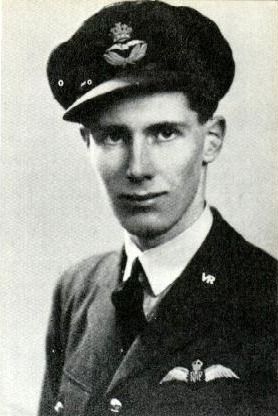
John Vere Hopgood was born August 29, 1921, the son of Harold and Grace Hopgood. He had at least two sisters, one of whom, Elizabeth, remembered: "I can remember him as a little boy, sort of getting in a panic over things. As a small child, he used to cry a lot," she said. "But when he got into the RAF it was incredible how he managed to control it." "He found his feet in the RAF." Hopgood joined the RAF in 1940 and trained as a pilot, serving in Bomber Command in 50 Squadron and 106 Squadron, the latter commanded by Wing Commander Guy Gibson, who was a great friend of his. He earned the Distinguished Flying Cross and Bar to the DFC during his service. He was one of the first pilots Gibson chose for 617 Squadron. As the backup for Gibson at the Mohne Dam, Hopgood knew that the flak would be ready and waiting, and he expressed to his friend, fellow pilot David Shannon, that he would not return from the mission. His aircraft was in fact shot up before their arrival at the dam; the front gunner was probably killed, the wireless operator was very severely wounded, the rear gunner wounded, and Hopgood himself was hit in the head, a wound of unknown severity but very bloody judging by the remarks of his flight engineer who was trying to staunch the flow. Having come so far, Hopgood elected to press on. After Gibson made the first run at the dam with no result, Hopgood lined up for his run. As he'd suspected, the flak gunners now knew the drill and were waiting for him. His Lancaster was badly shot up and set on fire; the Upkeep mine actually bounced over the dam and blew up the power station at its base. Hopgood struggled to keep the aircraft aloft long enough for the others to bail out; bomb aimer John Fraser went out the front escape hatch; the altitude was so low that he opened his chute in the aircraft, threw it out the hatch, and let it drag him out. The rear gunner, Pilot Officer Burcher, climbed out of his turret and found that the horribly wounded wireless operator, Minchin, had somehow crawled back to the rear exit. Burcher pushed him out, pulling his rip cord as he went out the door, then he reported to Hopgood that he was bailing out. "For Christ's sake get out!" Hopgood shouted, and Burcher opened his chute in the airplane as Fraser had; just as he was about to go out the door the Lancaster blew up. Minchin did not survive, but Burcher and Fraser became POWs. There is no question in my mind that John Vere Hopgood richly deserved the Victoria Cross, but no awards were made to any of the killed aircrew from Chastise, an injustice to this day. As an indication of how his crew felt about him, bomb aimer Fraser named his first son John Hopgood Fraser, and his daughter Shere, after the town where Hopgood had grown up. Flight Lieutenant John Vere Hopgood, DFC and Bar, is buried with four other members of his crew in Rheinburg War Cemetery, Germany.
Catherine Helene Hedwig Hampe was born in Australia in 1875; her father was a Lutheran minister. In 1905 she married Horace Edward Williams, the manager of a sheep station in Queensland, and they had five children, three of whom survived childhood: Horace Douglas, born in 1906, Charles Rowland, born in 1909, and Sheila. A son between Doug and Charlie died at birth; a son between Charlie and Sheila died of diphtheria aged 4. Her husband Horace passed away in May 1943, just days after the shattering news reached her that their son Charlie was missing after the Dams raid. Correspondence from her that survives in the Australian archives, related to Charlie's death, suggests she was a determined, strong-willed woman.
Catherine Helene Hedwig Hampe was the daughter of a Lutheran minister. She married sheep station manager Horace Edward Williams in 1905. They had five children: Horace Douglas, born in 1906, a son who died at birth, Charles Rowland, born in 1909, a second son who died age four, and daughter Sheila. A woman of firm faith, she did not like life in the outback, but stood by her husband through all the vicissitudes of fate. Her son Charles Rowland Willams served in the RAAF during World War II and was lost on the Dams raid, Operation Chastise, on May 16, 1943; tragically, her husband Horace died a few days later.
Catherine Helene Hedwig Hampe was the daughter of a Lutheran minister. She married sheep station manager Horace Edward Williams in 1905. They had five children: Horace Douglas, born in 1906, a son who died at birth, Charles Rowland, born in 1909, a second son who died age four, and daughter Sheila. A woman of firm faith, she did not like life in the outback, but stood by her husband through all the vicissitudes of fate. Her son Charles Rowland Willams served in the RAAF during World War II and was lost on the Dams raid, Operation Chastise, on May 16, 1943; tragically, her husband Horace died a few days later.
Horace Edward Williams was born in Manchester, England and emigrated to Australia as a young man to work on an uncle's sheep station in Queensland. A hard worker, Williams had varied fortunes throughout his life. In 1905 he married Catherina Helena Hedwig Hampe, the daughter of a German Lutheran minister. They had five children; Horace Douglas, 1906-1976, Charles Rowland, 1909-1943, and Sheila (1916-2007), as well as two sons that did not survive, one between Doug and Charlie died at birth, and Francis Ainslie, between Charlie and Sheila, who died of diphtheria aged four in 1914. At the height of the Depression in 1933, Williams' sheep station was sold out from under him; the family struggled to recoup, and were recovering by the time of World War II, by which time Horace was increasingly disabled by arthritis and heart problems. His son Charles Rowland Williams joined the RAAF and later lost his life on Operation Chastise, the Dams raid, on May 16, 1943. When the news that Charlie was missing reached the family, Horace was terminally ill with stomach cancer and the news was kept from him as a kindness. Horace passed away a few days later.

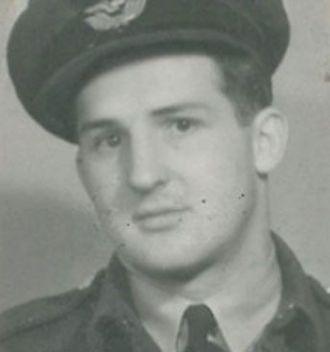
Flying Officer Philip Sidney Burgess was born in 1923 in Kent, the son of Willis and Marie Taylor Burgess. He had an older brother, Carroll Thomas Burgess, who was born in 1920, served in the Royal Engineers during the war, and passed away in 2003. Carroll and Phil were orphaned young and were brought up by a couple in Folkestone, the Rowlands, who operated a well known sweet shop in the town. Philip attended the Harvey Grammar School, and joined the Royal Air Force during World War II, training as a navigator in Canada. His first combat assignment was to 61 Squadron, a Lancaster unit, where he was crewed with pilot Flight Sergeant Ian "Woody" Woodward of the RNZAF and future 617 Squadron crewmate Flying Officer Charlie Williams, RAAF. Like Williams, Burgess was asked by 61 Squadron pilot Norm Barlow to join his crew for a secret mission on a special squadron being formed for the purpose; it's not known but it is possible that he was brought in on the same terms as Williams, with the remaining ops of his first tour forgiven. Burgess, his friend Charlie Williams, and the rest of the crew of Lancaster ED927/G "E Easy" were killed on the night of 16 May 1943 during Operation Chastise, the Dams raid.



